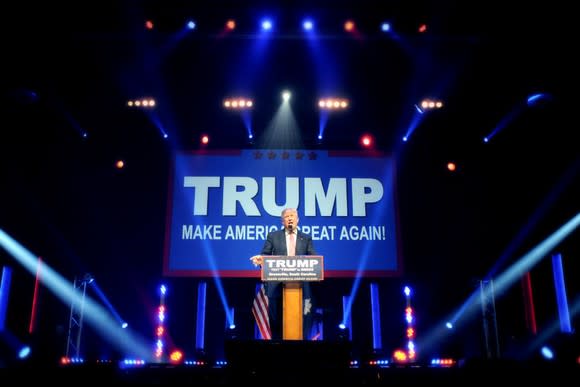Trump Cuts Cost-Sharing Subsidies, but It Won't Matter to Insurers
Donald Trump campaigned for president on a platform that includes repealing and replacing the Affordable Care Act, or Obamacare. However, Congress has failed to get a plan to his desk so far, prompting Trump to look for other ways to force Obamacare under. Last week, Trump issued an order eliminating the cost-sharing reduction subsidies paid to insurers on plans sold to low-income families, ostensibly to force insurers to exit Obamacare.
In theory, ending these cost-sharing reduction payments squeezes insurers' margins, but in practice, his decision probably won't have the impact on insurer profits desired. Insurers largely expected Trump would cut these payments, so they're increasing monthly premiums to levels that offset any revenue shortfall his decision would cause.

Unintended consequences
Silver plans are used to calculate the advance tax credits Obamacare members receive to lower their monthly premiums, and insurers are increasing those premiums to guarantee they'll be compensated for selling plans to low-income families that include cost-sharing reductions.
This move essentially allows them to sidestep any revenue headwinds associated with eliminating the cost-sharing reduction subsidies. And because of the way Obamacare is designed, consumers won't directly feel the premium increases. In most cases, it will be the federal government that's on the hook for the additional cost.
Earlier this year, the Kaiser Family Foundation, a non-profit that focuses on healthcare policy, estimated that Silver plan premiums would need to increase 19% to make up for lost cost-sharing reduction revenue. The state of California came to a similar conclusion, estimating Silver plan premiums would rise 16% to offset the risk of disappearing cost-sharing reduction payments.
The actual amount that insurers receive in premiums because cost-sharing reduction payments are ending varies by insurer and state, but Kaiser estimates that Washington will spend 23% more than it will save because of increasing premiums. Kaiser calculates that eliminating cost-sharing reduction subsidies will save $10 billion in 2018, but the government will spend $12.3 billion because of the higher premiums the decision causes.
Will insurers come out ahead?
Investors might not want to sell shares in insurers under the assumption that Trump's decision will cause revenue and profit to tumble. Insurers may be able to fully offset any losses stemming from Trump's action and they could actually collect more in federal payments if they padded their estimates when modeling for 2018 premiums. If Trump reverses course on subsidies and premiums don't drop by a similar amount, insurers could end up doing even better than planned.
Admittedly, there's no guarantee that insurers adequately modeled how much they need to increase premiums to offset the lost subsidies. Insurers' revenue could also fall short if higher premium subsidies encourage people to enroll in Bronze or Gold plans instead of silver plans. Since Silver plan costs are growing faster than other plans, Gold plans are becoming more competitively priced to Silver plans. In some cases, Bronze plans could even become free for many individuals who might've otherwise had to pay for them.
Regardless, underestimating insurers' ability to profitably navigate change might not be savvy because, historically, lawmakers don't usually catch insurers flat-footed.
More From The Motley Fool
Why You're Smart to Buy Shopify Inc. (US) -- Despite Citron's Report
6 Years Later, 6 Charts That Show How Far Apple, Inc. Has Come Since Steve Jobs' Passing
NVIDIA Scores 2 Drone Wins -- Including the AI for an E-Commerce Giant's Delivery Drones
Todd Campbell has no position in any of the stocks mentioned. His clients may have positions in the companies mentioned. The Motley Fool recommends UnitedHealth Group. The Motley Fool has a disclosure policy.
